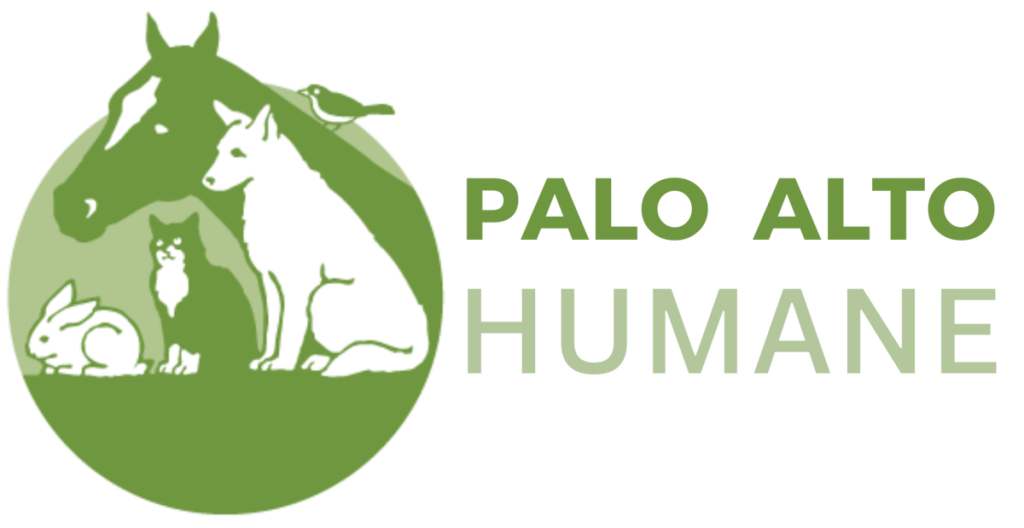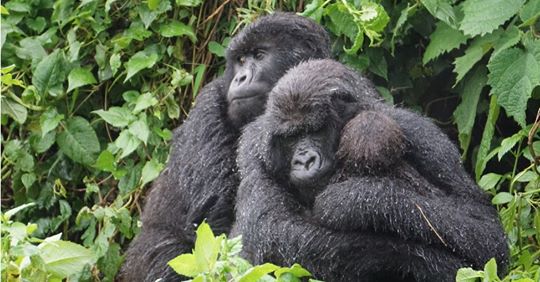One of PAHS’ board members, veterinarian Leigh Glerum, had the once-in-a-lifetime opportunity to visit the great apes of Africa. She’s captured some beautiful photos and shares more about her experience with these animals. Thanks, Leigh, for sharing your trip with us.

My journey to see the Great Apes of Africa had been on my bucket list for many years. I chose to go this year not only because I celebrated a milestone birthday but, more importantly, because I had a certain sense of urgency to visit these creatures before I no longer could. These fabulous creatures might not be around in the future. Habitat encroachment and loss is very real and protecting enough habitable areas to support life for the apes and chimpanzees is a daunting challenge. Luckily, there are many individuals, private groups, and governments that work together to ensure that the remaining populations are sustained and might even increase.

My husband and I joined a 10-day group trip to Uganda and Rwanda with National Geographic. We generally traveled by vehicle, and we were able to observe village life, city life, and countless members of the African animal kingdom. (I will detail only the parts of our trip when we observed the great apes, but please know that there was so much more involved in our experience.)

Our trip began in Uganda at Lake Victoria, where we were able to visit Ngamba Island Chimpanzee Sanctuary (https://ngambaisland.org/). This facility was established to care for chimps that were confiscated from poachers and smugglers at a young age and cannot be returned to the wild. The most sobering aspect is that, in order for people to access and capture a young chimp in the wild, the chimp’s entire family unit has to be destroyed in the process. There is not ample natural vegetation on Ngamba Island to support the existing group of 49, so the chimps’ diets are supplemented with regular feedings. We were able to participate in and observe one of their feeding sessions, and it was fascinating to see how the chimps have adapted to the facility and are thriving there.

Our next encounters with chimpanzees occurred in Kibale Forest National Park. As with all of our “natural” great ape encounters, these chimps have been habituated to humans. This means that they do not see us as a threat and that our presence should not disrupt their social interactions and daily goings-on to any significant degree. In order to minimize our impact, we were divided into small groups and traveled with a ranger/guide. Once we were in the presence of the chimps, we maintained a minimum distance from the animals and were limited to one hour of observation time. It was truly breathtaking to walk amongst the chimps and to be witness to their often very noisy interactions.

Our first encounter with mountain gorillas occurred in Bwindi Impenetrable National Park. The name of this forest is no joke—the terrain was quite rugged and steep. Our guides carried and regularly used machetes to clear a path through the dense brush. Our porters held our hands, pushed us, and pulled us through the mud, along steep inclines, and over creeks. Of course, the trek was more than worth these efforts. We were rewarded by spending an hour of quality time with a group of gorillas ranging in age and rank from toddler to silverback.

Our final mountain gorilla experience was in Volcanoes National Park in Rwanda. The volcanoes were not active, but the rain certainly was. It turns out that gorillas seem to enjoy getting rained on just about as much as we humans do, so part or our hour was spent watching them huddle and sit quite still. For a while, a yawn was the most exciting thing we observed, but things got more exciting when the rain stopped and the gorillas began to move about to seek out food. This day was a reminder of how very socially oriented and gentle these animals can be with one another. We later visited Karisoke Research Center to learn about the center’s conservation and advocacy efforts. The center was founded by Dian Fossey and has now become more of a household name thanks to Ellen DeGeneres’ interest.

This was an amazing trip! And these are amazing creatures! The great apes are our close relatives in both DNA and spirit, and it would be a travesty for them to disappear from this Earth. Please educate yourself about their lives and habitats and support them and the organizations that advocate for them if you are at all able.
If you’re interesting in learning more about these great apes, visit:
National Geographic Magazine: The Science That Brings Eco-Tourism to Rwanda

